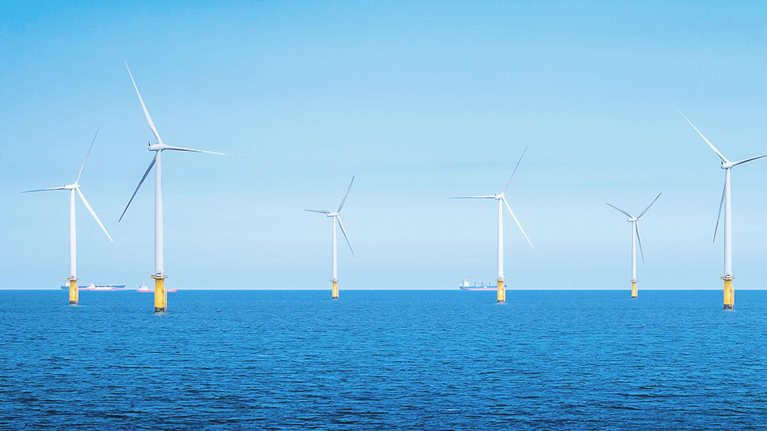Decommissioning and dismantling (D&D) a nuclear power plant can be a complicated, costly, and time-intensive process. It requires decontaminating equipment and disposing of dangerous waste materials—and it can take decades to complete. Moreover, the infrastructure for nuclear power plants, first commercialized in the late 1960s, was intended to function for only 40 years. Now, hundreds of D&D efforts are currently underway in Japan and throughout the world—notably in Germany, the United Kingdom, and the United States.
These increased instances of D&D in Japan are not due merely to aging infrastructure. After the 2011 earthquake and tsunami in the Tōhoku region, Japan’s Nuclear Regulation Authority (NRA) conducted inspections and recommended significant safety upgrades to the country’s nuclear reactors. Today, only nine reactor units are fully operational, while seven more have passed regulatory review, nine remain under review, three are under construction, and 26 are in the process of being decommissioned (Exhibit 1).

Although wide-ranging D&D efforts present a formidable challenge for any country, the situation in Japan is particularly thorny. Reasons for this complexity include a lack of radioactive-waste treatment facilities and the difficulty of disposing and storing radioactive materials. Indeed, reprocessing is key to Japan’s energy supply strategy, but the planned reprocessing facility will not be online until FY2021. Furthermore, being an archipelago means few sites are suitable for burying spent fuel. Finally, the associated costs are prohibitive, and the World Nuclear Association estimates that decommissioning the Tokai-1 reactor alone will total $1.04 billion.1
Despite these challenges, the NRA has attempted to define the regulatory framework for D&D in Japan, covering everything from safety standards to methods of assessing and reviewing decommissioning plans. Our experiences with countries that had started D&D earlier highlight opportunities to improve economics in this existing framework. In particular, implementation of megaproject improvement levers and collaboration among industry players can accelerate timelines and augment project efficiency even further.
Current approach, cost, and timeline to decommissioning and dismantling in Japan
As outlined by the NRA, the current approach to D&D in Japan relies on wet interim storage and takes anywhere from 25 to 40 years to complete (see sidebar “About the decommissioning process in Japan”). This plan consists of four phases (Exhibit 2).

The overall cost of D&D is estimated at $2.5 billion in a base-case scenario and can be clustered into the following five project groups2:
- Operations. At a robust organization that manages plant operations after shutdown, employees work throughout the D&D process up until the site is repurposed or returned to greenfield. In the base case, operations contribute 55 percent of total project costs.
- D&D. All contaminated components and areas are subject to D&D. For example, when dismantling the reactor building, conventional demolition will not suffice and the extra costs must be considered. D&D tends to contribute 21 percent of total project costs.
- Defueling. Defueling, handling the spent fuel (including acquiring dry-storage casks), and operating a potential spent-fuel interim storage facility on-site contribute 10 percent of total project costs.
- Waste storage. Disposal of low- or medium-level radioactive waste (including through the purchase of storage casks) and of conventional waste contributes 9 percent of total project costs.
- Waste handling. Treatment of low- or medium-level radioactive waste (such as filters, equipment, and tools) includes removing waste from interim storage for treatment, operating a waste treatment unit, and managing the clearance process; these activities contribute 6 percent of total project costs.
Taken together, the costs for these five project groups are mainly funded by reserve funds set aside by utilities for defueling, D&D, waste handling, and waste storage. However, operations costs are included as part of a utility’s annual business budget and therefore not included in cost forecasts.
Until 2005, Japan moved spent fuel to reprocessing facilities in France and the United Kingdom. More recently, however, the country has received mixed oxide fuel elements for use in its operational stations. The base-case timeline is approximately 30 years from shutdown to greenfield, largely because of the wait for an available, separate facility to process the waste. For the first ten to 15 years, spent fuel is stored on-site in wet spent-fuel pools inside the reactor building. The reactor pressure vessel, as well as other primary areas of the facility, cannot be decommissioned until year 15, when all the spent-fuel has been cleared from the site.
Safely reducing the time and cost of decommissioning
The NRA’s approach prioritizes safety above all—and rightly so. Nevertheless, integrated perspective leaves ample opportunities to improve time and cost without sacrificing safety. Therefore, building on the experiences of other countries, we complemented the base case with an accelerated decommissioning scenario.3 The objective for this scenario is to reduce the total timeline by introducing on-site dry cask storage in a separate building from the reactor (Exhibit 3), which is the common practice in other countries with a similar safety focus (such as Germany).

Simply stated, Japan lacks destinations for its spent fuel. In fact, 19,000 tons of spent fuel currently sits idle, with 16,000 tons in nuclear power plants and 3,000 tons at Rokkasho. In the absence of final storage options, countries in situations comparable to Japan’s—including Germany and the United States—have opted for on-site storage, while others’ utilities, such as Sweden’s, use central interim storage for spent fuel. D&D projects such as Obrigheim in Germany or Zion in the United States are on track to finish within 15 to 20 years.
Would you like to learn more about our Electric Power & Natural Gas Practice?
Given Japan’s commitment to reprocessing, Rokkasho represents the biggest bottleneck in D&D. Once functional, Rokkasho will have a reprocessing capacity of 800 tons per year. Dry cask storage must be constructed for high-level waste, such as spent fuel. As a result, the reactor building could be fully defueled in five years, enabling dismantling to begin a decade earlier than in the base-case scenario. Large components, such as steam generators and the reactor pressure vessel, will also be stored on-site rather than being segmented into small packages, speeding the process by another one to two years.
With the accelerated timeline, total costs would be reduced to about $1.7 billion—an approximately 30 percent decrease from the base scenario (Exhibit 4). These savings will largely be realized in operations, which would require less spend over less time.

Three additional levers could result in savings of more than $300 million each, leading to total costs of $1.4 billion in the end-to-end optimized case—a reduction of $1.1 billion from the base scenario:
- Zero-based post operations. All operations costs—from shutdown to greenfield—should be rigorously analyzed to separate and prioritize tasks that become necessary following shutdown. Ultimately, a zero-based cost review can potentially result in 20 percent savings for post operations.
- Expense scrubbing. A systematic, end-to-end review of megaprojects can help reduce costs related to both capital expenditure and operating expense. Overall efficiency can also be increased by adopting a design-to-value approach or minimum-technical-solution methodology, either of which can better enable specifications at lower costs. Finally, standardization and modularization can help drive down the need for—and costs of—customizing individual components. Expense savings on large projects could reach 15 to 25 percent.
- Contracting and procurement. A structured contracting approach across the project life cycle, covering strategy, selection, and management can help sharpen in-house focus as well as outsource external experience. In addition, already well-equipped plant owners or operators can be supplemented with advanced procurement tools and approaches. The potential savings on the outsourced scope of the decommissioning program can range from 10 to 20 percent.
These suggestions are meant to provoke discussion about maintaining safety levels while reducing time and cost. Other project management tools, such as a supply-chain control tower, five-dimensional building-information modeling, or the Last Planner System, can also help ensure that projects stay on schedule and under budget.
Opportunity for collaboration and system optimization
While the above-outlined opportunities for improvement are at the individual plant and site level, collaboration by Japanese players would open up even further improvements.
So far, collaboration within Japan is limited to the joint venture between Tokyo Electric Power Company and the Japan Atomic Power Company to construct the interim storage facility for spent fuel in the city of Mutsu.
Other countries have benefited from greater collaboration between their players or through the government. For example, Switzerland has an interim-waste-storage consortium among utilities. Meanwhile, state-owned programs in Italy, Spain, and the United Kingdom each orchestrate interim and final waste storage and execute D&D. In 2017, Germany’s government adopted a state-owned fuel back end that includes interim storage, thus removing uncertainty for utilities for regulatory decisions.4
Therefore, it stands to reason that cross-player system optimization and collaboration in Japan would have significant impact—on top of individual nuclear power plant D&D. The following system-optimization levers are suitable, especially considering the large number of units that began D&D simultaneously following the Fukushima accident:
- Storage centralization. Such facilities can centralize storage of both spent fuel and low-level waste, reducing the need for separate on-site facilities. As a result, capital and operating expenses can be greatly reduced, and increased market power can lead to decreased costs for storage casks.
- Procurement and contracting. Utilities that bundle their D&D portfolios can increase collective market and pricing power over their suppliers. In addition, collaborative contracting can result in more transparent demand forecasts for suppliers.
- Internal workforce management. Efficiency gains can be made in post operations as well as on large projects in D&D that are executed by internal staff. For example, specific task forces can focus on defueling or reactor pressure vessel dismantling, among other areas. The sophistication and high level of expertise of these task forces can further streamline activities and produce more efficient results.
To determine the systems costs, we built a model that quantifies 20 of Japan’s reactor units currently in D&D5—excluding the six at the Fukushima Daiichi plant, which is subject to its own calculations—with a combined 13.9 gigawatts of installed capacity and assessing the potential against the end-to-end optimized case and the base case (Exhibit 5).

Based on the model, the current base-case cost in Japan totals $34.9 billion. Using end-to-end optimization for individual units, however, the total cost can be reduced to approximately $19.3 billion. Local consortia for interim storages (with three central facilities across Japan) can reduce costs to $17.9 billion, while adjustments for a national decommissioning company can further lower costs to $14.4 billion—a 25 percent reduction compared with individual optimization (see sidebar “Helping other countries get up to speed”).
The need for safe and reliable D&D around the world is significant, and as the number of plants that require D&D increases, so too will the opportunities for improving time and cost. Japan faces a long road with distinct challenges—not the least of which is the number of plants undergoing concurrent D&D—but significant individual- and system-level opportunities can optimize time and cost without compromising safety. How the country handles these projects could inform how D&D is approached the world over.


